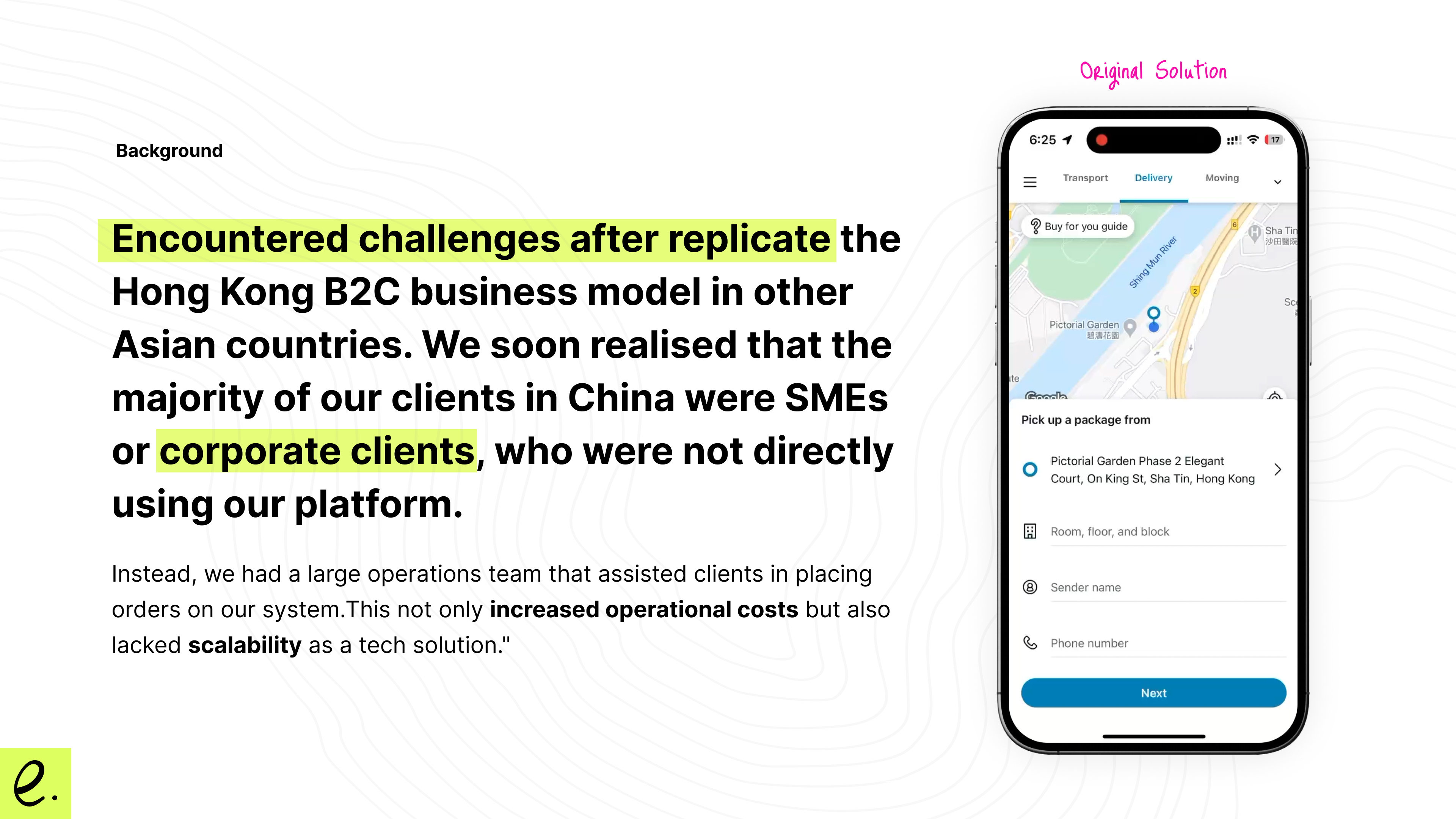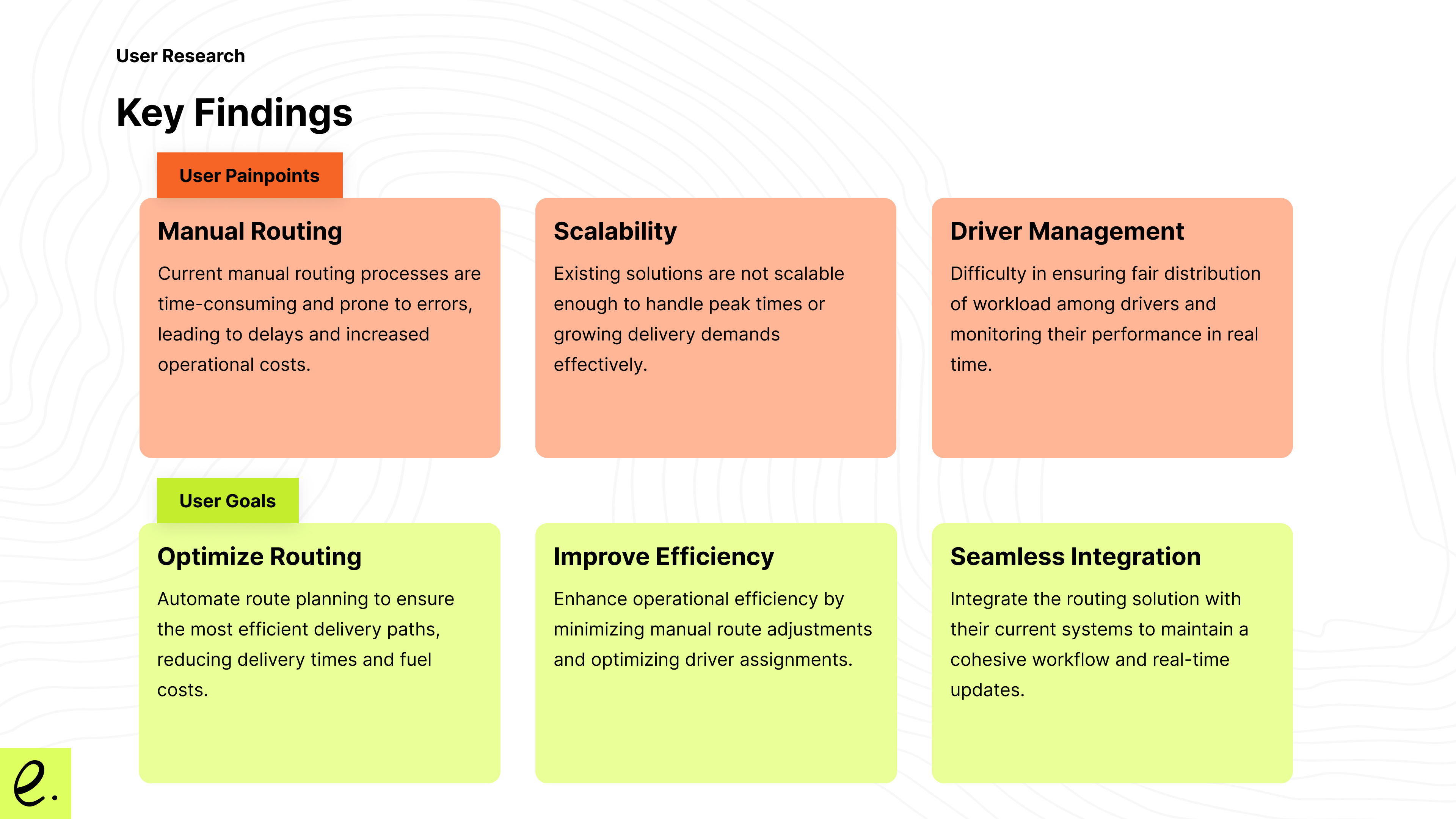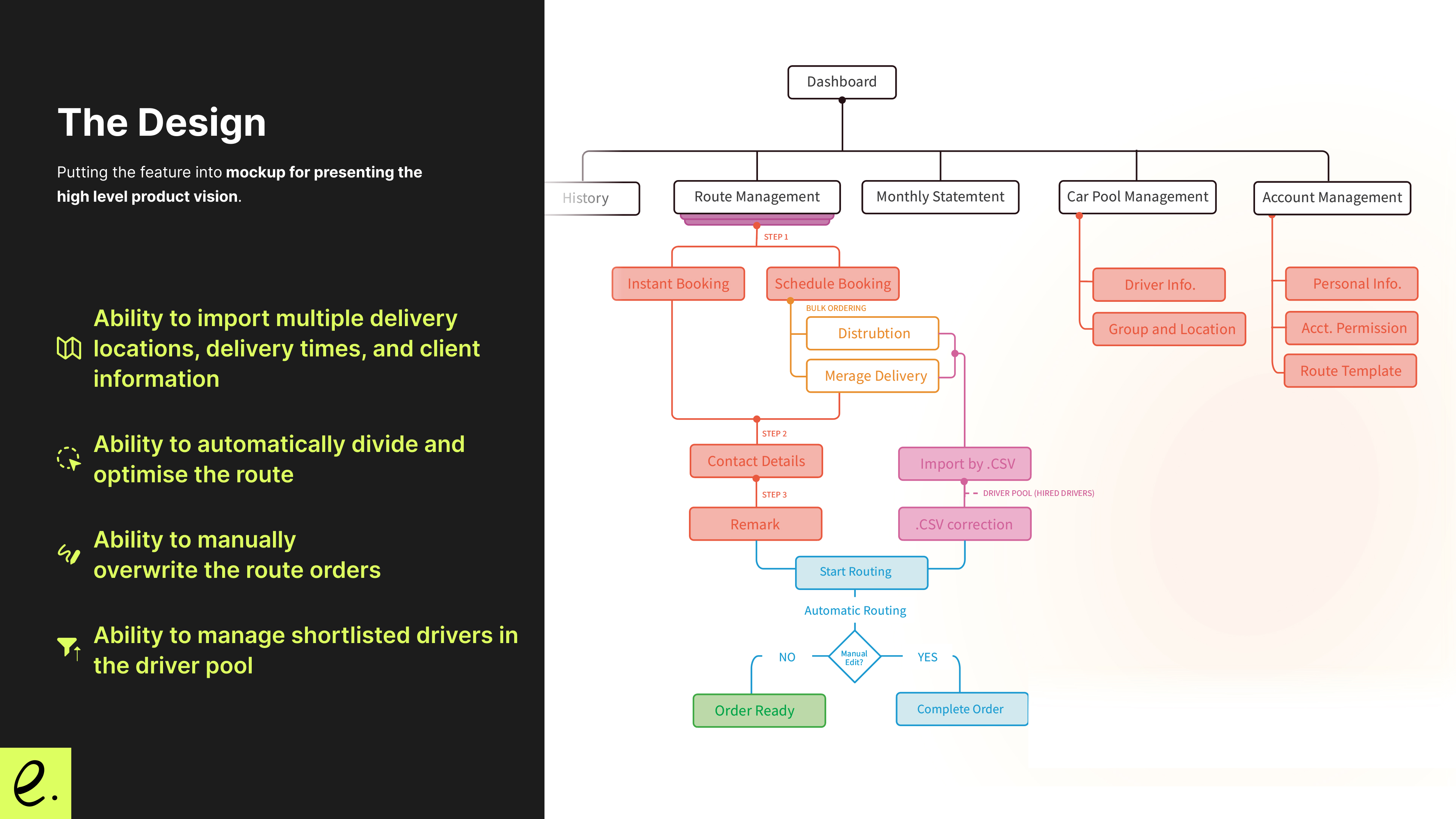


GoGoX (formerly GoGoVan) successfully gained traction in their Hong Kong business back in 2013 by allowing end users to quickly book a van for moving through a mobile app. The company decided to replicate this business model in four different asia countries: Taiwan, Singapore, Korea, and China. However, after operating for three years, the China operations team reported that most local clients were driven by B2B transactions, particularly in e-commerce. These businesses sought to book bulk delivery services daily, with varying routes and numbers of deliveries. The existing van booking service was not suitable for these corporate clients. As a result, we decided to develop an enterprise platform to enable corporate users and GoGoX to start arranging bulk deliveries.
The original design we built for the enterprise solution was based on the existing technology we had in Hong Kong. It allowed users to select the vehicle type, start time, add multiple delivery locations, and manually adjust the route based on their needs. This model worked perfectly in Hong Kong. However, we soon realised that the majority of our clients in China were SMEs or corporate clients, and they were not using our platform directly. Instead, we had a large operations team that assisted clients in placing orders on our system.
"This not only increased operational costs but also lacked scalability as a tech solution."
We began researching user types and needs in China to refine our product vision. We visited our operation offices in China and conducted interviews with both their operations team and clients (five corporate clients and two operations team members). Additionally, we followed drivers and visited clients’ factories to observe their operational workflows. I arranged a 60-minute face-to-face interview with one of our corporate clients, along with a local product designer. We transcribed the interviews to identify patterns in their responses and coded them accordingly. These codes were then brought back to the team and organized into themes through an affinity mapping exercise.

Most of the clients in China are corporate clients rather than household users. As observed over three months, the percentage of corporate users increased significantly from 15% to 100%. These users rely heavily on logistics routing and van services, particularly in the e-commerce and O2O grocery sectors, which have surged with the growth of O2O business in China. For example, an O2O grocery business may outsource some of its orders to drivers due to resource limitations.

.jpeg)
Our research insights, along with secondary research, helped shape our iterated designs for GoGoVan Enterprise. There were important features that we wanted to highlight in this design:


Given that logistics can vary significantly across different cities and countries, a successful business model in one market doesn’t necessarily translate to success in another. For example, in Hong Kong, the majority of our clients are individual users running personal businesses or moving personal items. In contrast, in the China market, the majority of users are B2B customers, with individual users rarely seeking van services (likely because there are well-established moving services available for them).
Upon reflection, I realised that our initial design was heavily based on the existing solution, without properly allowing users to optimise their routes. A key learning is that customers love the automation feature for designing routes, but they also want the ability to override these decisions at times. For instance, they may have a better understanding of their end customers’ delivery requirements, disagree with some of the system's delivery decisions, or want to ensure fair treatment for their drivers by balancing the workload.
The usage numbers indicate that the iterated design is increased 62% compare to the first version. However, I wouldn't say that the second iteration was a complete success in the market. When narrowing down the user types, we found that small businesses with 1-2 people involved were looking for the kind of platform and solution we designed. However, larger corporate clients with 100 or 1,000 staff members were more interested in integrating the solution into their existing systems (API integration would be the most appropriate solution for them).
Properly identifying your user types is also an art. It not only helps in design but also allows the business to focus on different sectors with the right strategy.


